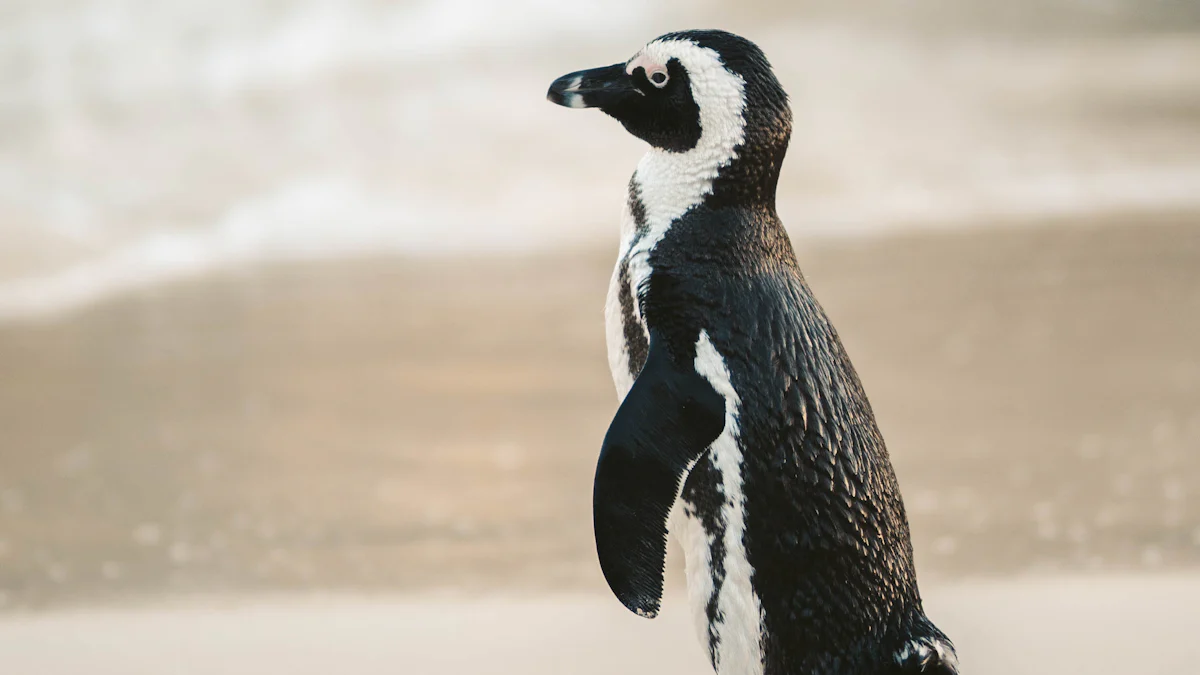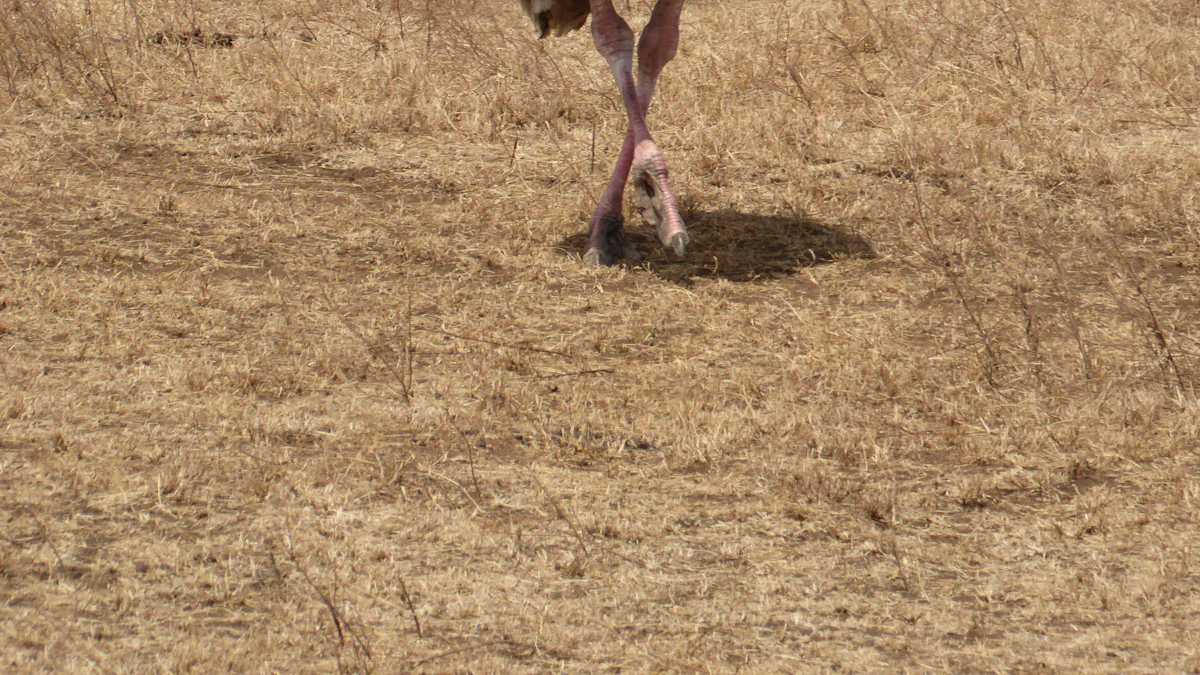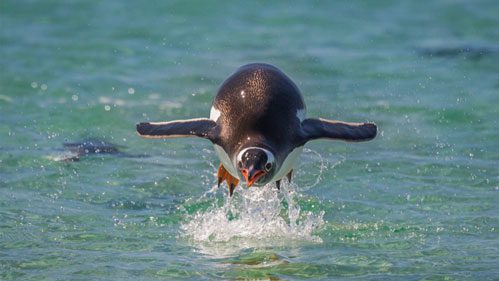
Flightless birds captivate curiosity with their unique adaptations. These fascinating creatures have evolved to thrive without the ability to soar through the skies. Understanding what bird can't fly unveils a world of diversity and resilience. Approximately 60 species of flightless birds exist today. Many face threats from habitat loss, predators, and human activities. These birds showcase remarkable adaptations, from powerful legs for running to specialized bodies for swimming. Each species tells a story of survival and evolution. Exploring these birds offers insights into nature's incredible adaptability.
The Fascinating World of Flightless Birds
Understanding Flightlessness
Evolutionary Reasons
Flightlessness in birds has evolved independently at least 150 times. Many bird species have lost the ability to fly due to evolutionary changes. Flightless birds like owls and woodpeckers have undergone unique evolutionary paths. These birds have adapted to their environments by developing traits that favor survival on land or water. The absence of predators on islands often leads to flightlessness. Birds on islands become flightless when expanses of water keep predators away.
Environmental Factors
Environmental factors play a significant role in the development of flightlessness. Birds living in predator-free environments often lose the need for flight. The availability of food resources on the ground encourages adaptations for terrestrial living. Birds in aquatic environments develop strong swimming abilities instead of flying. Dense forests or thick vegetation can also lead to flightlessness. Birds in such habitats may find it more efficient to walk or run.
Common Characteristics of Flightless Birds
Physical Adaptations
Flightless birds exhibit various physical adaptations. Strong legs support running or walking over long distances. Some birds, like penguins, have streamlined bodies for efficient swimming. Reduced wing size is common among flightless birds. The absence of a keel, which supports flight muscles, is another characteristic. Thick feathers often provide insulation in cold environments.
Behavioral Traits
Behavioral traits of flightless birds vary widely. Many species have developed unique foraging techniques. Some birds use their beaks to dig for food underground. Social behaviors often include forming groups for protection. Flightless birds may also exhibit territorial behaviors. Vocalizations and displays help maintain social structures within groups.
Meet the Birds that can't fly

The Ostrich

Habitat and Distribution
Ostriches roam the vast savannas and open woodlands of Africa. These birds thrive in hot environments. Ostriches can tolerate high temperatures and survive without water for long periods. The African landscape provides ample space for these large birds to run.
Unique Features
Ostriches hold the title of the largest bird in the world. Their powerful legs allow them to reach speeds up to 45 miles per hour. This makes ostriches the fastest running birds globally. Ostriches have massive wings, which they use as brakes. When stopping, ostriches push their wings out to the sides, acting like a parachute. These birds are omnivorous, feeding on plants, insects, and small animals.
The Emu

Habitat and Distribution
Emus inhabit the diverse landscapes of Australia. These birds adapt well to various environments, including forests, savannas, and grasslands. Emus can travel long distances in search of food and water. The Australian terrain offers the resources needed for emus to thrive.
Unique Features
Emus stand as the second-largest birds in the world. Their long legs enable them to run swiftly across the land. Emus have soft feathers that provide insulation against harsh weather. These birds possess a unique vocalization, producing deep, booming sounds. Emus feed on a diet of plants, fruits, and insects.
The Kiwi

Habitat and Distribution
Kiwis call the forests and grasslands of New Zealand home. These birds evolved in an island country with no land predators. The absence of predators allowed kiwis to develop without needing flight. New Zealand's environment supports the kiwi's nocturnal lifestyle.
Unique Features
Kiwis are small, flightless birds with a distinctive appearance. Their long, slender bills help them forage for insects underground. Kiwis have a keen sense of smell, which aids in locating food. These birds play a crucial role in seed dispersal and pollination. Kiwis contribute significantly to New Zealand's ecosystem functions.
The Cassowary

Habitat and Distribution
The cassowary resides in the dense rainforests of northern Australia and New Guinea. These environments provide abundant food sources and shelter. Cassowaries prefer tropical climates with high humidity. The lush vegetation offers protection from predators. Cassowaries often inhabit areas near water sources.
Unique Features
Cassowaries possess striking features that set them apart. A large, helmet-like casque adorns the top of their heads. This structure helps cassowaries navigate through thick underbrush. Cassowaries boast powerful legs capable of delivering strong kicks. These birds can run swiftly when threatened. Cassowaries play a vital role in seed dispersal within their ecosystems.
The Penguin

Habitat and Distribution
Penguins thrive in the icy regions of the Southern Hemisphere. Antarctica hosts the largest populations of penguins. Penguins also inhabit parts of South America, Africa, and New Zealand. These birds adapt well to cold environments. Penguins rely on ocean currents for food supply.
Unique Features
Penguins exhibit unique adaptations for aquatic life. Streamlined bodies enable efficient swimming. Penguins use flippers to propel themselves through water. Thick layers of blubber provide insulation against freezing temperatures. Penguins communicate through vocalizations and body movements. These birds form large colonies for breeding and protection.
The Rhea

Habitat and Distribution
Rheas roam the open grasslands and pampas of South America. These birds favor flat, expansive terrains. Rheas often inhabit areas with sparse vegetation. The South American landscape supports their grazing lifestyle. Rheas coexist with other herbivores in their habitats.
Unique Features
Rheas stand as one of the largest flightless birds in the Americas. Long legs allow rheas to run swiftly across open fields. Rheas possess soft, fluffy feathers that provide warmth. These birds display social behaviors, forming groups for protection. Rheas contribute to seed dispersal and plant growth in their ecosystems.
The Kakapo

Habitat and Distribution
The Kakapo, a nocturnal parrot, inhabits the forests of New Zealand. Dense forests provide shelter and food for the Kakapo. New Zealand's unique environment supports the Kakapo's ground-dwelling lifestyle. The absence of land predators historically allowed the Kakapo to thrive without flight. Conservation efforts focus on predator-free islands to protect the remaining population.
Unique Features
The Kakapo stands out with its green plumage and owl-like face. This bird can't fly but excels in climbing trees and walking long distances. The Kakapo uses its strong legs to navigate the forest floor. A keen sense of smell helps locate food, such as fruits and seeds. The Kakapo plays a crucial role in seed dispersal within its ecosystem.
The Flightless Cormorant

Habitat and Distribution
The Flightless Cormorant resides in the Galápagos Islands. These islands offer a rich marine environment for the cormorant. Rocky shores and coastal waters provide abundant food sources. The cormorant's habitat supports its diving and swimming abilities. Conservation efforts aim to preserve the cormorant's unique ecosystem.
Unique Features
The Flightless Cormorant has adapted to life in the water. This bird can't fly but dives expertly to catch fish. Short wings and strong legs aid in underwater propulsion. The cormorant's feathers lack waterproofing, requiring sunbathing to dry. This bird's adaptations highlight nature's ingenuity in response to environmental demands.
The Steamer Duck

Habitat and Distribution
The Steamer Duck inhabits the coastal regions of South America. These ducks prefer rocky shores and sheltered bays. The marine environment provides ample food resources. Steamer Ducks often remain close to their breeding sites. Conservation efforts focus on maintaining healthy coastal ecosystems.
Unique Features
The Steamer Duck exhibits remarkable adaptations for aquatic life. This bird can't fly but uses powerful wings to "steam" across water surfaces. Strong legs and webbed feet enhance swimming capabilities. The duck's robust body withstands harsh coastal conditions. Steamer Ducks play a vital role in maintaining the balance of their marine habitats.
The Importance of Flightless Birds in Ecosystems
Ecological Roles
Seed Dispersal
Flightless birds play a crucial role in seed dispersal. Many species, like the cassowary, consume fruits and excrete seeds far from the parent plant. This process helps maintain plant diversity and forest health. The rhea also contributes by spreading seeds across the grasslands of South America. These birds ensure that different plant species thrive in their habitats.
Predation and Prey Dynamics
Flightless birds impact predation and prey dynamics in their ecosystems. The penguin serves as both predator and prey in marine environments. Penguins hunt fish and krill, maintaining balance in the ocean's food chain. On land, predators target penguins, influencing population control. The cassowary uses powerful legs to defend against threats, affecting predator behavior. These interactions shape the ecological balance.
Conservation Efforts
Threats to Survival
Flightless birds face numerous threats to survival. Habitat loss poses a significant risk to species like the cassowary. Deforestation reduces available space for these birds to live and forage. Hunting and human activities further endanger flightless birds. The penguin encounters challenges from climate change, which alters food availability. These threats require urgent attention to prevent extinction.
Protection Initiatives
Conservation efforts aim to protect flightless birds and their habitats. Organizations work to preserve critical areas for species like the rhea. Protected reserves provide safe environments for these birds to thrive. Breeding programs help increase population numbers for endangered species. Community education raises awareness about the importance of conserving flightless birds. These initiatives strive to secure a future for these remarkable creatures.
Flightless birds showcase unique traits that captivate and educate. These birds adapt to environments with remarkable resilience. Each species plays a vital role in ecosystems. Flightless birds contribute to seed dispersal and maintain ecological balance. Conservation efforts prove successful for some species. The Kakapo population increased to 213 in 2019. The Flightless Cormorant population stabilized in the Galapagos Islands. Your awareness and action can support these initiatives. Learn more about these fascinating creatures. Engage with conservation programs. Flightless birds need your help to thrive.
For more intriguing insights into birds and their mysteries, don’t forget to check out our blog!













